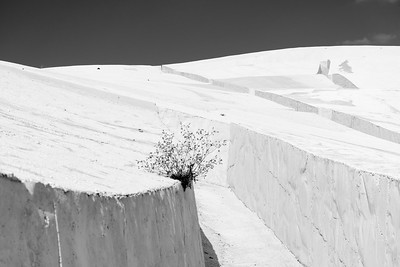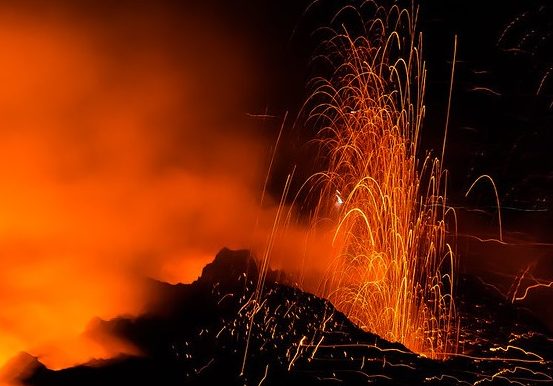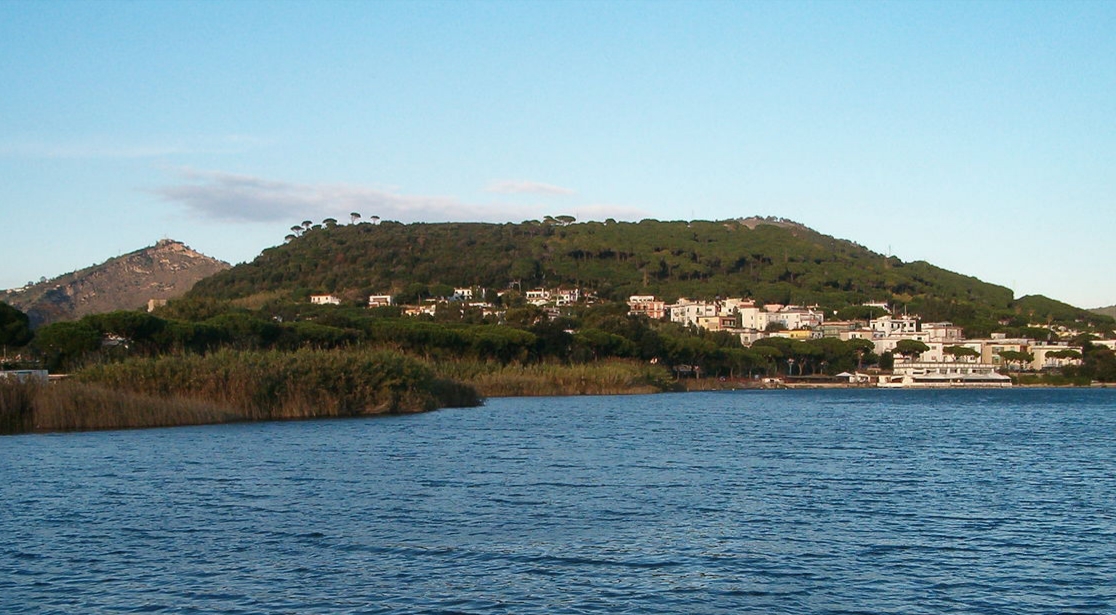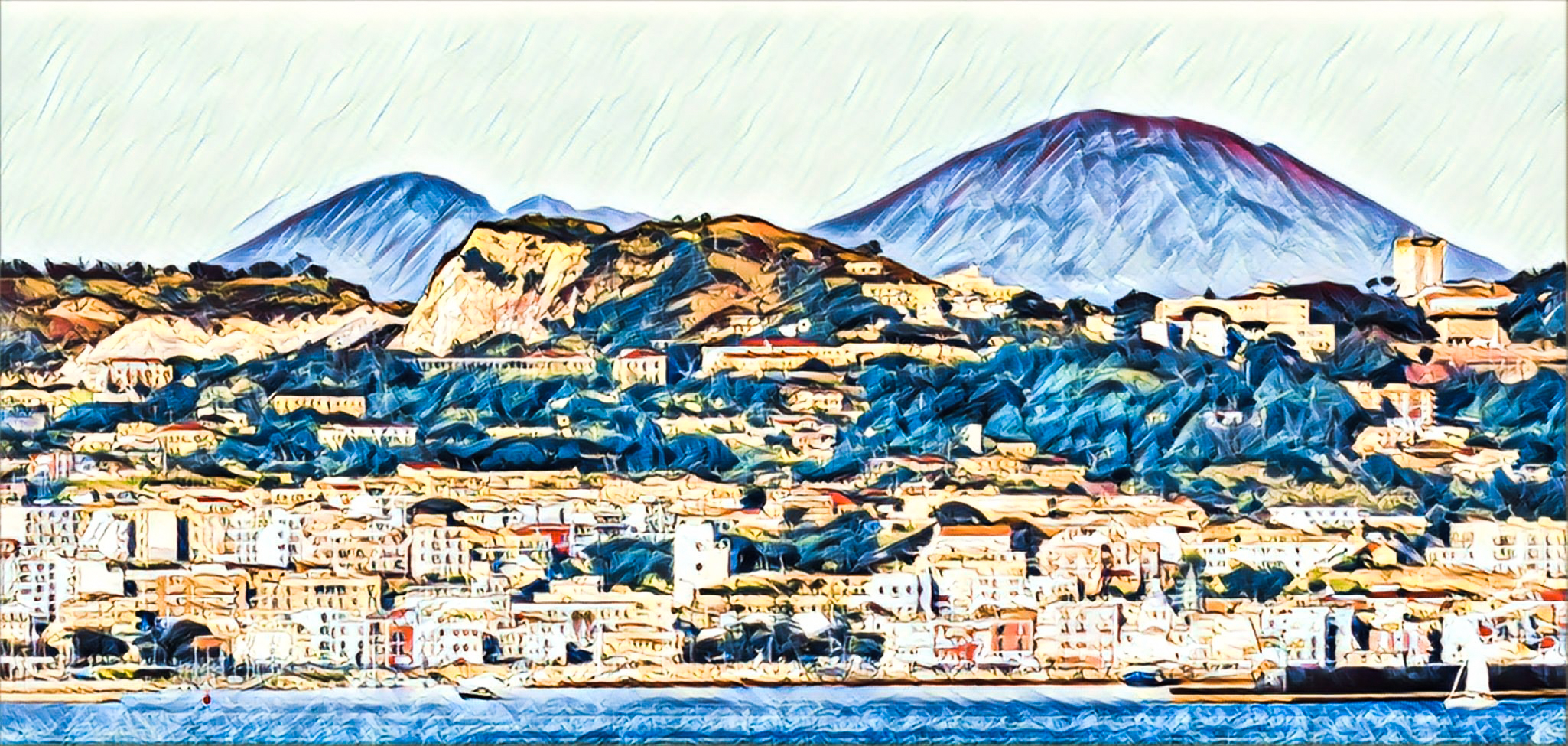Tag: Italy
Ghostly Geology

Halloween is here! This is my favorite part of fall: costumes, spooky stuff, decorating in black not only allowed but encouraged…. This is the holiday I was born for.
And I have some geology made for the holiday! This year, the theme is ghosts, and we’re going to visit some very ghostly geology and paleontology indeed.
1. Ghost Shrimp Haunts Ichnologist

This is a different kind of ghost shrimp than the ones under discussion, but it is metal enough for Halloween, so we’re rolling with it. Credit:
Freddie Alequin (CC BY-SA 2.0)
Paleontology isn’t just about bones and preserved bodies: a branch of it, ichnology*, also looks at the things those bodies left behind, like fossilized trails, tracks, nests, burrows, borings, excavations, and even the divots left by pee. In this post, my favorite ichnologist, Tony Martin, talks about a very unusual trace he found that would be even more exciting to find in the fossil record.
Life Traces of the Georgia Coast: Ghost Shrimp Whisperer
Geologists love ghost shrimp, too, because of how their burrows are so numerous, fossilize easily, and are sensitive shoreline indicators. I wrote about this before with regard to how geologists in the 1960s were able to map ancient barrier islands of the Georgia coastal plain by looking for trace fossils of these burrows. Since then, geologists and paleontologists have identified and applied these sorts of trace fossils worldwide, and in rocks from the Permian Period to the Pleistocene Epoch.
I could prattle on about ghost shrimp and their ichnological incredibleness for the rest of the year, but will spare you of that, gentle reader, and instead will get to the point of this post. Just when I thought I’d learned nearly everything I needed to know about ghost-shrimp ichnology, one shrimp decided I needed to have my eyes opened to some traces I had never seen them make before just a few months ago.
*Not to be confused with ichthyology, which has to do with fishies. It’ll help to remember that ikhnos means “track” or “trace” in Greek, while ikhthus means “fish.”
2. Ghosts of Minerals Past (more…)
A Very Volcanic Fourth of July

Look, human-made fireworks are pretty. And I enjoy them! Sometimes. When the forest isn’t crispy from an overly hot, dry summer and ready to catch on fire from so much as a heated word. And when I don’t have to battle crowds to see them. And when I don’t have to hear all the noise, which is becoming less and less entertaining as I get older.
Okay, so I like them on television, at my home, with the sound off, okay? Then I love them a lot. They’re very pretty!
But as impressive as some human pyrotechnic displays are, they just can’t quite measure up to the show an erupting volcano can put on. So for this July 4th, I’m going to take you on a world tour of volcanic light shows, courtesy of some very talented photographers.
Resurrecting Pompeii: The Testimony of Skeletons

It’s amazing what bones will tell you if you know what questions to ask. Dr. Estelle Lazer spent years making inquiries of the skeletons of Pompeii, and her Resurrecting Pompeii is filled with their stories.
This is an academic work, written in academic language, so please don’t go into it expecting an easy, breezy read. There isn’t a ton of geology involved, either. You’re going to be encountering more anatomy and pathology than you might have been strictly prepared for. But if you want to see a lot of myths busted, and learn who the people trapped in Pompeii by the eruption were, this book will more than repay all the time you spend googling unfamiliar terms.
A 16th Century Volcano Adventure: “The Marvelous Hills of Sulphur”

It’s early 1550, and a young Sir Thomas Hoby is traveling through a volcanic wonderland. Britain hasn’t had anything comparable to the Campanian coast of Italy for tens of millions of years. There are places where geothermally-heated water rises through fractures and faults, used by humans to treat various ailments for milennia, but nothing as raw and exciting as what he sees here.
Taking the highway to the town of Pozzuoli, he marvels at the medical baths (Sudatorii) on the shores of Lago di Agnano: “…they cause good digestion and resolve raw humors, they lighten the body and heal the inward parts, they dry up fistles and wounds, and are very good against gout.”* In an age when medicine is still far more of an art than a science, these medicinal baths fed by volcanic springs are often the best chance at relief for people suffering from poor health.
He is probably unaware that these wonderful Sudatorii are a mere remnant of a medical spa industry that had been booming less than twelve years before.

